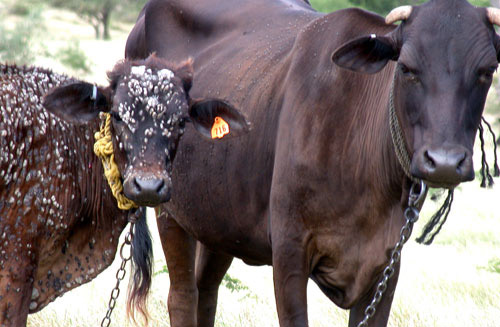
BY MTHANDAZO NYONI
ZIMBABWE lost about 15 328 cattle due to tick-borne diseases between 2014 and 2020, resulting in huge economic losses in cattle assets and farm savings in the country, a new document shows.
According to a 10-year integrated national ticks and tick-borne disease control strategy launched in Harare recently, four major tick-borne diseases, namely theileriosis, anaplasmosis, heartwater and babesiosis were killing thousands of cattle in the country annually.
The strategy, launched by the government through the Department of Veterinary Services (DVS) with support from Food and Agriculture Organisation of the United Nations (FAO) and the European Union (EU), seeks to avert this situation.
The document shows that from 2014 to 2020, Zimbabwe recorded 6 194 cattle deaths from bovine theileriosis out of 11 762 reported cases.
The province with highest deaths of animals in the period under review was Mashonaland West with 2 172, followed by Mashonaland Central at 1 598.
Again, the country lost 3 938 cattle to bovine anaplasmosis from 21 089 cases. Also the province with high deaths was Mashonaland West with 1 039 followed by Manicaland at 679.
The report also revealed that bovine heartwater claimed 3 940 animals out of 11 382 reported cases while bovine babesiosis claimed a total of 1 256 cattle.
- Chamisa under fire over US$120K donation
- Mavhunga puts DeMbare into Chibuku quarterfinals
- Pension funds bet on Cabora Bassa oilfields
- Councils defy govt fire tender directive
Keep Reading
The report indicated that the tick-borne diseases were responsible for huge economic losses in cattle assets and farm savings in Zimbabwe, accounting for more than 60% of cattle deaths in the country.
The strategy, according to FAO emphasises the need for evidence-based decision-making based on localised solutions, with robust engagement of community and public as well as private players along the ruminant livestock value chain.
It said the use of vaccines will help to protect cattle and reduce mortalities and usage of curative antibiotics.
All this, the organisation said, is in line with the overall objective of the food safety systems for the future (SAFE) project.
The project aims to transform Zimbabwe’s animal health, and food safety systems for improved livestock productivity, food safety and consumer safety to enhance market access.
The SAFE project is being implemented under the European Union and FAO funded SAFE project that started in March 2019.
The SAFE project is part of an EU funded Zimbabwe Agricultural Growth Programme (ZAGP), a response to tackle challenges within the country’s livestock sector through financial support from the EU amounting to €40 million.
During the launch, the SAFE project officially handed over the commissioning of a refurbished tick-borne disease vaccine production unit at the central veterinary laboratory at the DVS headquarters in Harare.











